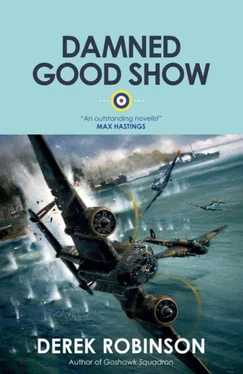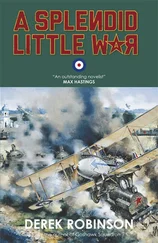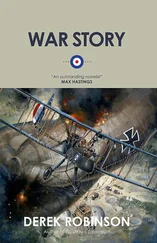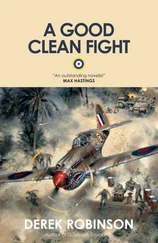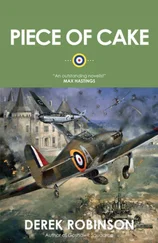Filling a thin-skinned airplane with fuel and explosives is hazardous. Accidents with bombs or mines were not frequent but they could be devastating. As McHarg revealed, some pre-war bombs had “sweated” their contents and created a layer of explosive crystals on the outside. A Long Delay Pistol (installed in a delayed-action bomb) could develop a fault which set it working prematurely. If it detonated the bomb inside the aircraft, no evidence would remain. By 1942, some Armaments Officers were aware of these hazards; I took the liberty of bringing McHarg’s knowledge forward a few months.
Langham’s brush with “stabilized yaw” is a reminder that even the Hampden (which most pilots found enjoyable to fly) could turn round and bite. The trouble was a combination of human error and a design fault in the tail unit. If a ham-fisted pilot made a clumsy turn, the wings and fuselage might block the airflow. The twin rudders and elevators would be useless and the yaw would get worse. At height, the pilot might recover control. At low level, the Hampden toppled sideways and simply fell out of the sky.
Damned Good Show includes some details of bomber operations that may seem strange, even bizarre. Did Hampdens really carry pigeons? They did. The radio might fail; if the crew had to ditch, the pigeons could take an SOS message back to base. Could a woman be smuggled onto a bomber, as Kate Kelly was? It happened. Usually she was a Waaf, and it was a training flight; but at least one Waaf flew on ops over Germany. Did bomber pilots really find their way home by using factory chimneys and railway signals as signposts? They did. Could Rollo Blazer have fallen to his death through a hole in the floor? The hole is not surprising: bombers landed with all sorts of flak damage; and I know of an instance where the rear gunner left his turret as soon as the aircraft touched down, walked forward and suffered the same fate as Rollo. Is it possible that the millions of leaflets dropped on Germany were classified secret in Britain? They were. When Bomber Harris became C-in-C in 1942, he derided “all the complicated secret document procedure” which Air Ministry ordered for the handling of leaflets, but he could not change it.
I included an episode in which a retired brigadier complains that practice bombs have disturbed his breeding gulls. His attitude may seem absurd, given Britain’s desperate situation, but there were instances of similar behavior. On a night of foul weather in July 1941, an RAF bomber crashed on Northampton. The chief constable telephoned Bomber Command. “I can’t have this, you know!” he complained. Clearly, many civilians had little idea of the harsh realities of the bombers’ war.
The catalog of catastrophe told to Rollo and Kate by aircrew was based on fact. In particular, the descriptions of Arctic conditions inside bombers were not exaggerated; quite the contrary. All too often the heating system failed and thick frost or ice formed both outside and inside the airplane. Air so cold it hurt, teeth-jarring vibration, endless din, electrical interference from St. Elmo’s Fire, the lethal ferocity of cumulo-nimbus clouds—all this, and more, formed the regular diet of bomber crews. In addition there was the sheer grind of repeatedly attacking German targets that were more and more heavily defended. The odds were against completing a tour of thirty ops. In these circumstances, RAF Intelligence Officers were understandably reluctant to interrogate crews too closely when they came back from a raid that had been long, demanding, probably frightening, usually exhausting.
Nearly everyone in Damned Good Show is a fictional character, including those at Crown Films and the Ministry of Information. (Anyone interested in Skull’s posting to the Desert Air Force should read A Good Clean Fight , published by The Harvill Press in 1993 and now republished by Cassell.) Three individuals are real (although I had to imagine their conversations). Professor Lindemann was in fact Churchill’s Scientific Adviser, and it was for Lindemann that David Bensusan-Butt produced the Butt Report, with the help of Constance Babington Smith’s Photographic Reconnaissance Unit. (Others played major parts in setting up that Unit. For the sake of simplicity, I allowed her to represent them all.)
It took some time for the Butt Report to be accepted and acted upon, but its findings proved to be a watershed in the bombing campaign. Before Butt, Bomber Command had done negligible harm to Germany, at great cost in men and machines. After Butt, the need for much better methods of navigation and bomb-aiming was indisputable.
The cinema had a job to do in wartime. Rollo Blazer’s efforts were all my invention, but in 1941 Crown Films did make a documentary about a Wellington crew’s raid on Germany. Target for Tonight used the crew of F-Freddie, from 149 Squadron. There are two ironies. One is that Target for Tonight was enormously popular and boosted aircrew recruitment just at the time when Bomber Command was at its lowest ebb. After the Butt Report, influential voices were saying that Bomber Command was a waste of men, money and materials. Some wanted it abolished. What the film claimed to show was, in fact, what Bomber Command was not doing to Germany.
The second irony is that Target for Tonight , heavily praised for its honesty and realism, in fact gave a very cosmetic view of an operation. For all its documentary status, there was nothing spontaneous about it. All the dialogue was carefully scripted, and most of the supposed operation was shot in the studio. The raid was said to be at a low level against an important target, yet enemy defenses were skimpy. F-Freddie scored a direct hit. The general impression was that a single Wellington could easily find and destroy any target deep inside Germany.
That, of course, was the message all Britain wanted to hear: something was going right at last. So Target for Tonight was completely justified. Morale is a weapon of war. And the hard fact was that, for all its failings, only Bomber Command was taking the war to the enemy homeland. Rafferty was right when he asked Skull to suggest an alternative. In 1941, there was none. The bombing campaign sent a signal to the British people: Keep it up—Germany is suffering. It sent a signal to America: Britain isn’t beaten. It sent a signal to Russia: Britain is fighting Hitler too.
So the crews of Bomber Command had to carry on their nightly battle. It was not so much a battle to help win the war—that came later—as a much grimmer battle to avoid losing it. I hope Damned Good Show offers at least a hint of the extraordinary courage and endurance shown by the men who kept the battle going.
In preparing this story, I was very fortunate to have the technical help of a former RAF bomber pilot, Flight Lieutenant Frank Lowe, DFM. During 1941 he completed a tour of ops on Hampdens; then, on July 28/29, 1942, in a raid on Hamburg, he was shot down (and made prisoner of war) when piloting a Wellington with a trainee crew. His advice has saved me from many slips and pitfalls. Any errors that appear are entirely my fault.
Fiction
Goshawk Squadron
Rotten with Honour
Kramer’s War
The Eldorado Network
Piece of Cake
War Story
Artillery of Lies
A Good Clean Fight
Kentucky Blues
Hornet’s Sting
Hullo Russia, Goodbye England
Red Rag Blues
Non-fiction
Invasion, 1940

An imprint of Quercus
New York • London
© 2009 by Derek Robinson
Читать дальше
